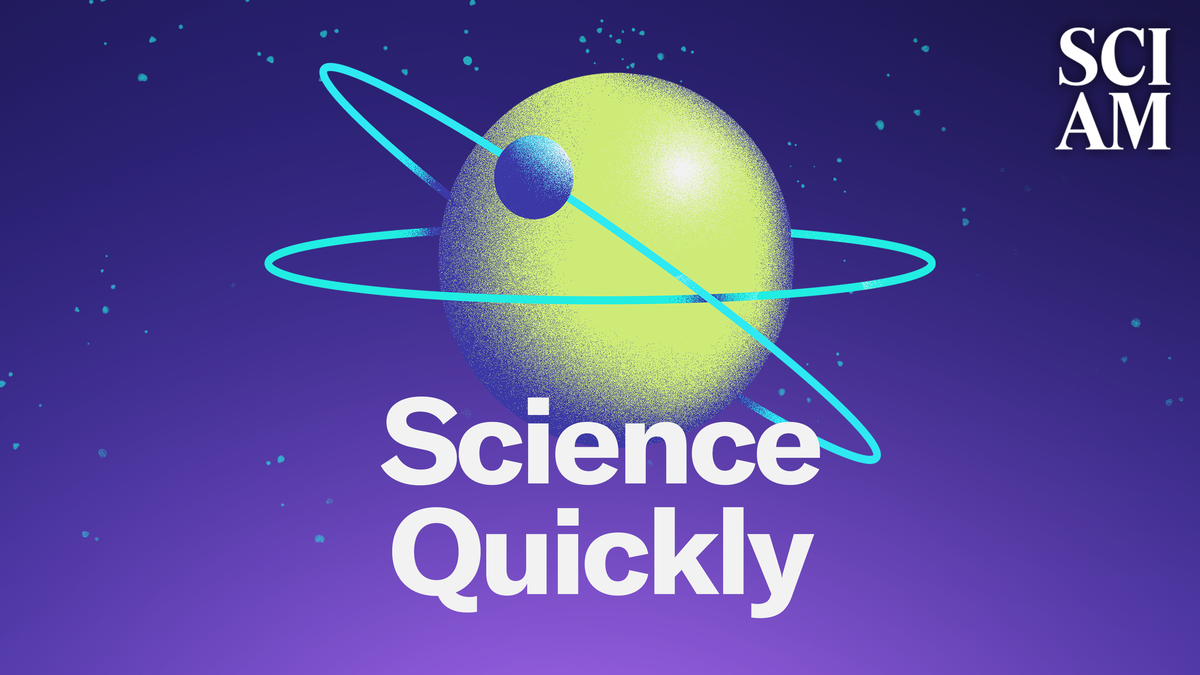Rachel Feltman: For Scientific American’s Science Quickly, I’m Rachel Feltman.
Even if you don’t know what the International Union for Conservation of Nature’s Red List is off the top of your head, I can pretty much guarantee you’ve heard of it: the IUCN keeps tabs on the conservation status of living organisms all over the globe. Giant pandas are listed as vulnerable on the Red List, the Asian giant tortoise is marked as critically endangered, and lots of other charismatic megafauna have gotten not-so-honorable mentions, too. But the IUCN recently sounded the conservation alarm for some creatures many of us spend a lot less time thinking about: fungi.
In March the IUCN announced that its experts had assessed 482 fungi species for the first time, bringing the Red List’s fungal members up to 1,300. Around a third of those species are at risk of extinction.
On supporting science journalism
If you’re enjoying this article, consider supporting our award-winning journalism by subscribing. By purchasing a subscription you are helping to ensure the future of impactful stories about the discoveries and ideas shaping our world today.
Most folks don’t care much about mushrooms or molds, which the IUCN says is a big problem. Today’s guests will help us understand why. I’m joined by Gregory Mueller, chief scientist emeritus at the Chicago Botanic Garden and coordinator of fungal conservation programs for the IUCN, and Anders Dahlberg, a professor of mycology at the Swedish University of Agricultural Sciences.
Thank you both so much for coming on to talk today.
Gregory Mueller: It’s our pleasure.
Anders Dahlberg: It is. It’s really a pleasure.
Feltman: So the IUCN is sounding the alarm for fungi. Gregory, I’ll start with a question for you: Is this news surprising to mycologists?
Mueller: I don’t think it’s very surprising for mycologists, but for the broader conservation community it is. For a long time it was assumed that fungi really didn’t need to be a focus of conservation efforts because either they weren’t in trouble or they existed in such a broad part of the world—they existed everywhere, each species—that if there’s a problem in one place, it was fine in another …
Feltman: Mm.
Mueller: And now we know that, like animals and plants, fungi have very discrete distributions, discrete habitat preferences, so if something’s in trouble in one place, it probably is in trouble.
Feltman: Mm, and, Anders, why do you think fungi have kind of gotten the short end of the stick from a, a conservation standpoint?
Dahlberg: I think that most of the time they live [cryptically], they’re not seen, [even] though we have an immense diversity of species of fungi in the world. And therefore they have been overlooked, they haven’t been considered, although they are omnipresent and they are vital players for everything in how things are working in nature. So I think people have considered it difficult to handle the presence of species and to understand how—whether they are threatened or, or not.
Feltman: And, Gregory, could you tell our listeners a little bit about why this kingdom of life is so important to protect?
Mueller: Sure, so fungi play incredible ecological roles. They’re nature’s recyclers, so they’re recyclers of dead organic material. Now, when that happens in your—back of your refrigerator, when there’s rot in the orange or something back there, you don’t like it, but in nature it’s breaking down the wood, the dead leaves, everything like that, so really essential to recycle everything.
Secondly, there are some that are important pathogens that cause disease of plants and some animals, but many of them also form critically important symbioses, mutualisms, that plants require to grow and thrive. And so without these fungi we just wouldn’t have nature as we know it; it just wouldn’t survive. And then on top of that there’s all kind of economic reasons that fungi are important: for food, for medicines, and things like that. I like to say: life as we know it on this planet would not exist without fungi.
Feltman: Could you give our listeners some examples of some of those symbiotic relationships? You know, what are some plants that would really be in trouble without fungi?
Mueller: Sure, our pines, our oaks, all of those require a relationship with what we call mycorrhizal fungi. And so the mushroom that’s growing through the ground, it absorbs water and nutrients and transports that to the roots of the tree. And in return the tree provides sugars that it makes through photosynthesis, passes down into the roots and into the fungus. So it’s kind of a controlled parasitism, if you wanna say. But both partners require the other partner to survive and thrive.
And those are some of our great edible species—chantrelles, boletes, things like that are also these mycorrhizal fungi.
Dahlberg: And I think there is an addition to add to that as well: that these symbioses have been evolving since the very beginning, when the first plants started to come up to land 400, 500 million years ago. So in principle [nearly] every single plant all over the world have these symbiotic relationships and have evolved to take up nutrients from the soil and water through this symbiosis, a little bit like our microbiome in our stomach and intestines—it’s working in the same way.
Feltman: Hmm, so there are probably a lot of downstream effects of fungi struggling that we might not even be aware of yet.
Dahlberg: Definitely, that there are, and they’re exposed to the same stresses as animals and plants …
Feltman: Mm.
Dahlberg: That when the habitats are changing, when we are more intensively [using] agricultural land or areas around towns or using the forests, that is affecting fungal species in the same—or similar ways as it does for animals and plants.
Feltman: And what other kinds of threats are fungi facing?
Dahlberg: So the main threats are sort of the changing habitats, that we humans are using the land, and that’s nothing strange. I mean, I’m often saying that nature doesn’t care, but we are caring. Nature—species are just adjusting to the prevailing conditions. Some are favored, others are disfavored, depending on how we manage our land.
And then there are other threats besides the habitat use, of course. It’s, like, the nitrogen deposition—that we are using the cars and engines and causing a lot of nitrogen that is enriching, making the soil and land more fertile—as well as the changing climate, the gradual change in the conditions for the plants upon which most fungi are dependent. And increasing the incidents of fire: so particular species that are restricted to certain habitats that are fire-prone are [subject] to disappear due to the increased incidents of fire, for example.
Feltman: Gregory, what are you hoping to see change so that we can protect the world’s fungi?
Mueller: I think the first thing is a recognition that fungi need to be considered in conservation policy, in conservation actions and that they get the attention that they need.
Feltman: Mm.
Mueller: You know, to date, pretty much, they’re out of sight, out of mind and are not being considered, and we—hopefully this raises that awareness that we need to be thinking about fungi, we need to be incorporating fungi in our actions.
Feltman: Yeah.
Mueller: I think part of the issue that people are always saying we can’t do things about fungi is because there are so many of them that we don’t know yet, right?
Feltman: Mm.
Mueller: There’s about 160,000 described species, but there’s an estimate of two to three million species. So you say, “Oh, what do we know?” But I think what this study shows is that we know a lot, we know enough to be able to include fungi in our work, to recognize that fungi are in need of protection. And so yeah, we need a lot more work, we need a lot more information, but we know enough to do the work that needs to be done.
Feltman: Hmm.
Dahlberg: And, and I think also this: that things we, we don’t see, it’s difficult to know about, and it’s even more difficult to appreciate such things, as cryptic fungi mostly are. And we really need to be aware of this cryptic organism in order to safeguard their existence if we want [to] for the future.
Feltman: Yeah, well, my last question for both of you—mycology was my favorite subject as an undergrad, but I think most people don’t spend much time thinking about fungi, so I would love to just ask you: What do you love about studying mycology? You know, what’s something you wish the general public knew so that they could appreciate this kingdom more?
Mueller: For me it’s its diversity, the beauty. I got excited because we knew [such a] little bit about [it] but what we knew was so exciting—the fact that these are intimately associated with other organisms. So as a scientist I work with mutualistic organisms, so I need to be a mutualistic biologist: I need to work with my plant colleagues, I need to work with my animal colleagues, and so I can’t work independently; I need to be thinking about the entire system to be able to do my work, and I find that very exciting.
Dahlberg: It’s really a fascinating life-form, and in a way it’s sort of parallel to the animals—that they have the same ancestors, just two different branches. So in a way I look up on it as different [ways] of packaging DNA that are moving in space and time, where fungi have their way, with the mycelia, that may be short-lived or long-lived. They may be small; they may be extensively large. I mean, they can be like sort of plankton or they can be large at the—as this giant aspen, the, the Pando you have in Utah, for example. It’s an immense variation in life-forms, in sizes and things like that. And that fascinates us, me particularly, to dwell into that, to better understand how they make their lives go around.
Feltman: Well, thank you both so much for coming on to chat today. This has been great.
Dahlberg: Thank you.
Mueller: Thank you.
Feltman: That’s all for today’s episode. We’ll be back on Monday with our usual science news roundup.
Science Quickly is produced by me, Rachel Feltman, along with Fonda Mwangi, Kelso Harper, Naeem Amarsy and Jeff DelViscio. This episode was edited by Alex Sugiura. Shayna Posses and Aaron Shattuck fact-check our show. Our theme music was composed by Dominic Smith. Subscribe to Scientific American for more up-to-date and in-depth science news.
For Scientific American, this is Rachel Feltman. Have a great weekend!







